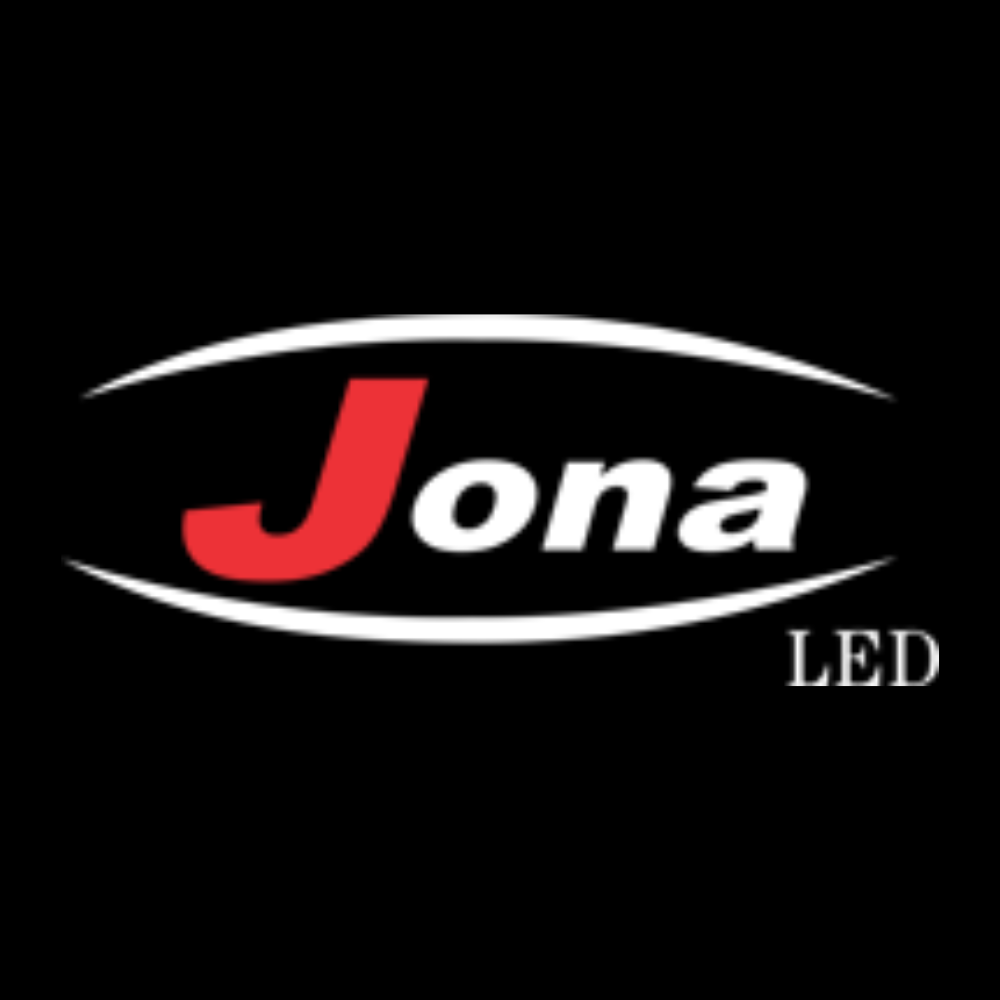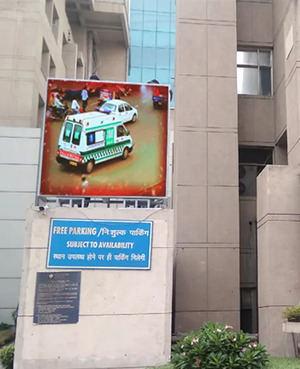Light Up Your World: The Revolutionary Potential of LED Displays for Conference Spaces, Hospitals, Banquet Halls, and Airports
الجسم
Imagine visiting an elegant banquet hall adorned with elaborate décor and towering ceilings. The space is filled with people, and a prominent LED display at the far end draws attention to itself. It is a digital canvas that shows stunning videos, real-time event information, and high-resolution photos. It is more than just a screen. This is how communication, entertainment, and information sharing will be done in the future: elegantly, effectively, and spectacularly.
But why stop there? LED displays are no longer confined to entertainment. These dynamic screens have found homes in places where precision, clarity, and real-time information are crucial: hospitals, conference rooms, and airports. Whether it's directing a guest to their next flight, providing critical medical information, or enhancing a corporate presentation, the brilliance of LED displays transcends expectations and elevates any experience.
Let’s delve into how LED displays are revolutionizing these four different sectors.
The Banquet Hall: Turning Every Occasion into a Showpiece
Picture yourself in an opulent ballroom at a lavish wedding. Candlelight is reflected by golden accents, traditional marble carvings adorn the walls, and a massive LED display artfully presents the bride and groom's love story with breathtaking visuals.
More than just an aesthetic improvement, LED displays in banquet halls are a practical wonder that turns gatherings into spectacular events. But how exactly do LED screens amplify the banquet experience?
Problem: Dull, Static Event Decor
Traditionally, banquet halls have used static décor, such as floral arrangements, table centerpieces, and maybe a few projectors for presentations, to create the mood for events. However, static decor often falls short in delivering a truly immersive experience. Guests are left with the same stagnant visuals throughout the event, while content like videos, photos, or live speeches struggle to reach all corners of a grand, crowded room.
Agitation: Poor Visibility and Immersive Quality
One of the most frustrating aspects of traditional banquet settings is the lack of engaging, large-scale, real-time visuals. The main content is typically projected onto small screens that leave guests craning their necks to catch a glimpse of important moments. Additionally, lighting setups are usually dim, which makes the space feel disconnected and less dynamic.
Solution: LED Displays—The Crown Jewel of Modern Banquets
Now, imagine walking into that same banquet hall, only this time, the room glows with vibrant LED displays, strategically placed for optimal visibility from every seat. These displays project crystal-clear videos, photos, and event information, bringing the entire experience to life.
LED displays for banquet halls by Jona LED are well known for their exceptional clarity and brilliant brightness, even in poorly lit environments. Because of their modular design, they can be made to any size or shape, blending in perfectly with the banquet hall's design without drawing attention to themselves.
Moreover, interactive LED screens let event organizers create a dynamic environment where guests can enjoy live updates, immersive backdrops, and personalized video montages. The result is a breathtaking experience that not only looks stunning but also ensures every guest feels involved.
Hospitals: Where Clarity and Efficiency are Essential
Hospitals, places where critical decisions are made in mere seconds, require tools that can provide accurate, timely information at all times. LED screens have found an essential role in modern healthcare, offering unmatched clarity and versatility.
Problem: Information Overload and Delayed Communication
In hospitals, timely and efficient communication can mean the difference between life and death. Whiteboards, printed schedules, and paging systems have long been used by hospitals as information exchange tools. Nevertheless, these approaches frequently lead to confusion, missed messages, and information bottlenecks. Additionally, static signage doesn't provide the flexibility to adapt quickly to changing situations, such as patient room shifts or medical alerts.
Agitation: Slow Response Times and Compromised Care
Imagine being a healthcare professional rushing to a critical patient's room, but due to outdated signage or inefficient communication methods, valuable seconds are lost in figuring out the right location or patient status.On the other hand, consider a family that is kept in the dark about updates regarding the surgery for hours due to an antiquated communication system.
Being able to deliver prompt, accurate, and up-to-date information can be crucial in such a high-stress situation.
Solution: LED Screens—A Beacon of Real-Time Information
LED displays are a very useful tool in hospitals for enhancing communication between staff members and patients as well as outside communication. These screens, which are installed in operating rooms, waiting rooms, hallways, and emergency rooms, show real-time information on patient conditions, operational status, physician availability, and emergency alerts.
LED screen for hospitals by Jona LED are very suitable because of their high visibility, dependability, and simplicity in updating with new data. For example, in a case study involving a major U.S. hospital, LED displays were used to update family members in real-time about patient statuses during surgeries. This drastically reduced anxiety for families, increased efficiency for hospital staff, and allowed for smoother operations.
In emergency settings, LED screens are vital for broadcasting critical alerts and directions to staff, ensuring that medical teams are informed instantly. In the age of telemedicine and complex health networks, the precision and versatility of LED displays become indispensable.
Conference Rooms: Elevating Business Communication
If there is one space that benefits from the precision and brilliance of LED displays, it's the modern conference room. Whether hosting small team meetings or global video conferences, today's businesses demand crystal-clear presentations and efficient communication tools.
Problem: Outdated Presentation Equipment
During meetings, information is shared using projectors, whiteboards, or small screens in traditional office setups. These tools frequently have issues, such as grainy pictures, tiny screens, dim lighting, and restricted interaction options, which makes it challenging to communicate complex information in an interesting way.
For instance, picture attempting to convey a comprehensive marketing plan to a global customer, only to be confronted with a pixelated image from the projector or a non-responsive screen.
Agitation: Lack of Concentration and Poor Communication
Poor presentation quality can lead to important delays, misunderstandings, and a loss of focus in the hectic world of business. A poor presentation could make a lasting bad impression on prospective partners, investors, or clients. Furthermore, dim or hazy screens make it difficult for teams to collaborate, causing them to repeat important details rather than take action and make decisions.
Solution: LED Screens—The Pinnacle of Professional Presentation
LED displays are revolutionizing the corporate world by transforming the conference room into a high-tech hub for collaboration, communication, and decision-making. With LED screens, presentations are no longer limited by screen size or resolution.
The ultra-high-definition quality of LED display for conference room by Jona LED ensures that every graph, chart, and slide is perfectly clear, even in large rooms. Additionally, many LED screens are interactive, allowing users to engage directly with the display—whether by annotating data points, zooming in on key figures, or adjusting visuals on the fly.
A case study from a major tech firm highlights how upgrading to LED screens improved meeting productivity by 30%. The ability to clearly display high-resolution data, conduct video conferences without lag, and collaborate in real-time empowered teams to make faster, more informed decisions.
The flexible nature of LED screens also makes them ideal for video conferencing. Their bright displays ensure that remote participants are visible to all attendees, while integrated sound systems ensure clear audio. This creates a seamless, immersive experience for all participants, regardless of their location.
Airports: Guiding Millions with Precision
An airport is a place where timing, direction, and real-time information are of utmost importance. LED displays have become an essential part of airport infrastructure, ensuring that passengers, staff, and visitors have the information they need when they need it most.
Problem: Outdated Flight Information Displays
Flight information displays are perhaps the most critical screens in an airport. Passengers rely on these displays to navigate the complexities of flight schedules, gate changes, and boarding times. In the past, airports used static boards or outdated digital systems that struggled with real-time updates and clear visibility in large, crowded terminals.
Agitation: Missed Flights and Confusion
Consider the frustration of missing a flight due to unclear signage or delayed updates on gate changes. Every minute counts when navigating an airport, and unclear or outdated information can cause passengers to miss crucial updates, leading to costly delays and inconveniences.
Solution: LED Displays—The Heartbeat of Modern Airports
LED Display for airports by Jona LED is not just for flight information; they are multifunctional tools that improve overall operational efficiency. From baggage claim updates to security checkpoint information, LED screens ensure that passengers and staff are always in the loop.
A notable case study at a major international airport showed how replacing older digital displays with LED technology led to a 40% reduction in passenger confusion and delays related to gate changes. These screens provided clearer, more legible updates, and their quick-refresh capabilities meant that gate changes and flight updates could be communicated in real-time with minimal lag.
In addition to flight information, LED displays are used for wayfinding, advertising, and even entertainment. Their vibrant colors and high brightness ensure visibility from long distances, even in brightly lit airport terminals. Passengers can now find their way more easily, reducing stress and improving the overall airport experience.
Moreover, airports use large LED walls for advertising, which generates substantial revenue. Advertisers are drawn to the superior visual quality and the fact that these screens can display dynamic, engaging content that grabs the attention of millions of travelers.
Conclusion: The Universal Power of LED Displays
From the grandeur of banquet halls to the fast-paced urgency of hospitals, from the corporate world’s conference rooms to the ever-busy airports, LED displays have become indispensable. They not only bring a level of sophistication and elegance but also provide real-time, highly visible, and efficient communication across industries.
Their adaptability, vibrant display quality, and reliability make them the ultimate solution for modern-day challenges in a wide variety of settings. Whether creating unforgettable moments at a wedding, facilitating life-saving communication in a hospital, enhancing business presentations, or guiding millions of passengers at an airport, LED displays are the cornerstone of today’s most innovative spaces.
Investing in LED technology is no longer just an option; it’s a necessity. The future is bright—literally—with LED displays leading the way in transforming how we experience information, communication, and visual engagement.









تعليقات